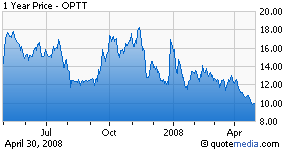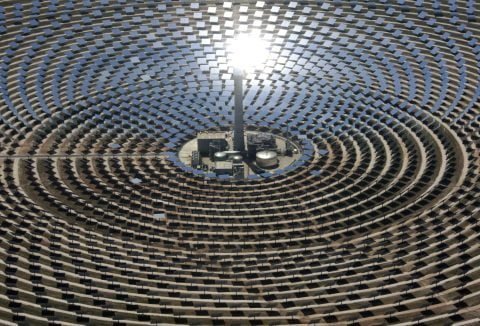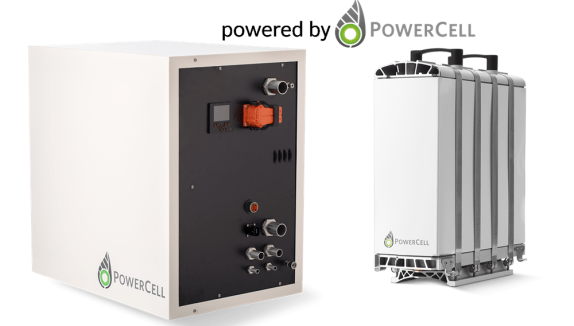Before we take a look at Ocean Power Technologies (OPTT), let's take a brief glance at the energy market
As of this writing, oil has been hitting its all-time highs – the price of oil has been increasing seamlessly for well over a year.
Until recently, gas prices have managed to stay relatively low due to a record supply, but with the traveling season upon us, the increased demand for fuel has started to drive gasoline prices upwards as well. The increase in the price of oil and gas would imply that alternative energy producers would be more competitive, but that has not been the case.
Sunoco (SUN), which started selling Verasun (VSE) branded E85 in Rockville, MD, has its flex fuel priced at around $2.70/gallon. Regular gas, at the same station, is selling at $3.40/gallon. Considering ethanol boasts ~80% of the efficiency of regular gasoline, the price parity is an illusion – you’re really paying the same price for the amount of energy you get. Nevertheless, increased gas prices have allowed Verasun to increase the price of ethanol as well, but Verasun’s stock is still trading at 52 week lows, as are other ethanol producers – like Pacific Ethanol (PEIX). If ethanol was a cheaper substitute to oil, then we should be seeing a completely different picture. But with the rise in the prices of corn and transportation, Verasun and other ethanol producers have struggled with their costs to remain in operation, a testament their stock performance can vouch for.
Indeed, current ethanol pricing is staying on par with increases in the prices of oil, but ethanol producers cannot gain the margins needed to be profitable, even with government subsidies. If oil continues to escalate in price, ethanol producers will be able to increase their margins towards profitability.
For potential investors in alternative energies, this scenario elucidates that alternative energy has to be cost-effective. That is, more money has to be made from the sale of the energy than the cost put into its production, while being competitively priced with the competition. With this in mind, we take a look at Ocean Power Technologies .
The Industry
Transportation fuels like gasoline and jet fuel, petro-chemicals like plastics and many pharmaceutical ingredients are derived from oil. But the energy that we turn into electricity is primarily derived from completely different sources. Of the four major sources of electricity generation in America, ~50% of the electrical power comes from coal, ~20% from nuclear power, ~20% from natural gas and ~7% is hydro-electrical.
Current costs (in cents) per kilowatt/hour fall within the following ranges:
- Natural Gas: 3.9-4.4 Cents/kW-h
- Coal: 4.8-5.5
- Nuclear: 11.1 – 14.5 (elevated inefficiency is mainly a result of political pressures)
- Wind: 4-6
- Geothermal: 4.5 – 30
- Hydro Electric (Dams): 5.1 – 11.3
- Solar: 15-30
The Company
Unlike hydro-electric power, which typically functions by storing and releasing water from reservoirs via dams, ocean power (the process) uses a buoy system that generates energy from the movement of waves.
Ocean Power Technologies has already developed a functional 40kW buoy generator and is on the verge of releasing the 150kW buoy. The upgrade path starts with 40kW and moves through 150kW, 250kW and 500kW. Ocean Power’s time line puts the 500kW buoy in the year 2010.
Their current means of cash flow from operations is from petty government contracts (both national and international) to the tune of $1-$2 million. In the 9 months ending January 31, 2008, operating losses of over $12 million outstripped revenues by almost 400%. On April 30, 2007, Ocean Power completed their initial public offering in the United States, which produced net proceeds of $89.9 million, and as of January 31, 2008 they had about $106 million in cash and cash equivalents. To date, however, the company has never been profitable. Since inception, it has burned through ~$47 million. Management reported in the 10-K that to be profitable without any government subsidies, they must annually sell at least 300 of their currently non-existent 500kW generators.
Aside from the vague statement, management gave very little information about those estimates or the likelihood of meeting these expectations. We will try to fill in the gap and see if these estimates are feasible.
Business Outlook
In order for management’s claims to have any weight, we will have to assume that the cost per kW/hour will be competitive with coal which, depending on the grade, costs between $0.048-$0.055 kW/hour. Therefore, we will assume the end-user cost of electricity produced by the 500kW buoy system to be $0.05 kW/h. Management estimates the life of each buoy at 30 years, but actual buoys that were made were not tested for more than 18 months. Therefore, we will assume a 25-year lifespan, that 8% of revenue will go toward cost of repair and maintenance over the useful life of the buoy, and that there will be 85% runtime (buoy system is shut down during rough seas and stormy weather). Under those assumptions, after 25 years, one buoy would generate almost $4.3 million in revenue. We further assume that whoever buys this buoy would reasonably expect at least a 7% annualized return on that investment. This would put the purchase price of one buoy from Ocean Power at $789,000. Based on these assumptions, $789,000 is the highest price Ocean Power can sell their 500kW buoy. If they plan to sell 300 of them per year, this would put annual revenues at $236.7 million.
The question then becomes what kind of annual costs would Ocean Power need to incur to generate this revenue?
The costs become much harder to estimate. Barely fitting on a truck bed, the current 40kW buoy is 12 feet wide and 52 feet long. Because of the shear size, all consecutive buoy systems will have to be put together on site, which may increase costs beyond current operational norms. Furthermore, the 500kW buoy is expected to be 62 feet wide and 128 feet long — four times the dimensions of the current 40kW buoy. This translates into more physical parts and resources required toward manufacturing the larger buoy. To accommodate for the increase in production requirements, Ocean Power plans to add approximately 90,000 square feet of leased space by the end of 2010. The costs and location of such a space are as of yet unknown. Head-count is also expected to increase from the current count of 40 to 160. This would likely balloon Selling General & Administrative costs from about $4 million to around $20 million annually.
Furthermore, Ocean Power had net operating loss-carry-forwards for federal income tax purposes of approximately $24.2 million, which begin to expire in 2009. These two obvious expenses would eat away a large chunk of $106 million in cash the company has. With $66 million remaining for operations, it is hard to imagine that this would be enough to manufacture 300 of the 500kW buoys. Ocean Power’s estimate was to get at least 300 of those buoys sold annually, so margins are likely small and require economy-of-scale to allow for profitability. If the highest sale price is $789,000, and we assume very liberally that one buoy will cost $400,000 to make, it will still be an annual cost of $120 million, which their current cash reserves cannot accommodate.
Realistically, the margins will be much smaller than that, and we think it’s reasonable to expect that Ocean Power will seek more funding through the dilution of their stock, debt instruments, or both.
While this is a very promising company, there is too much uncertainty regarding their costs and general operational efficacy. Endurance of their buoys has not been fully tested, which makes energy output and productivity hard to estimate, especially when some of their customers have subsidized costs of maintenance and repair. Also, the competitive market is large, with roughly 30 other companies in their field — companies like Blue Energy, which promises costs as low as $0.02 per kW/h. Ocean Power’s current market capitalization is trading on par with book value, which is mostly comprised of cash. Due to the small size of the company, it seems very likely that the increased spending on the horizon, and the likely need for more financing, will put more pressure on the stock, which is already trading at half the price of its initial public offering.
No doubt, wave technology is interesting and promising, but whether Ocean Power can deliver return on equity at current valuations seems questionable. In short, it is too early in their production timeline to be confident in Ocean Power’s ability to both increase its operations dramatically and be able to incur the costs of those operational requirements. Until we can see progress in Ocean Power’s ability to effectively scale production, this stock should simply be kept on the radar screen.











